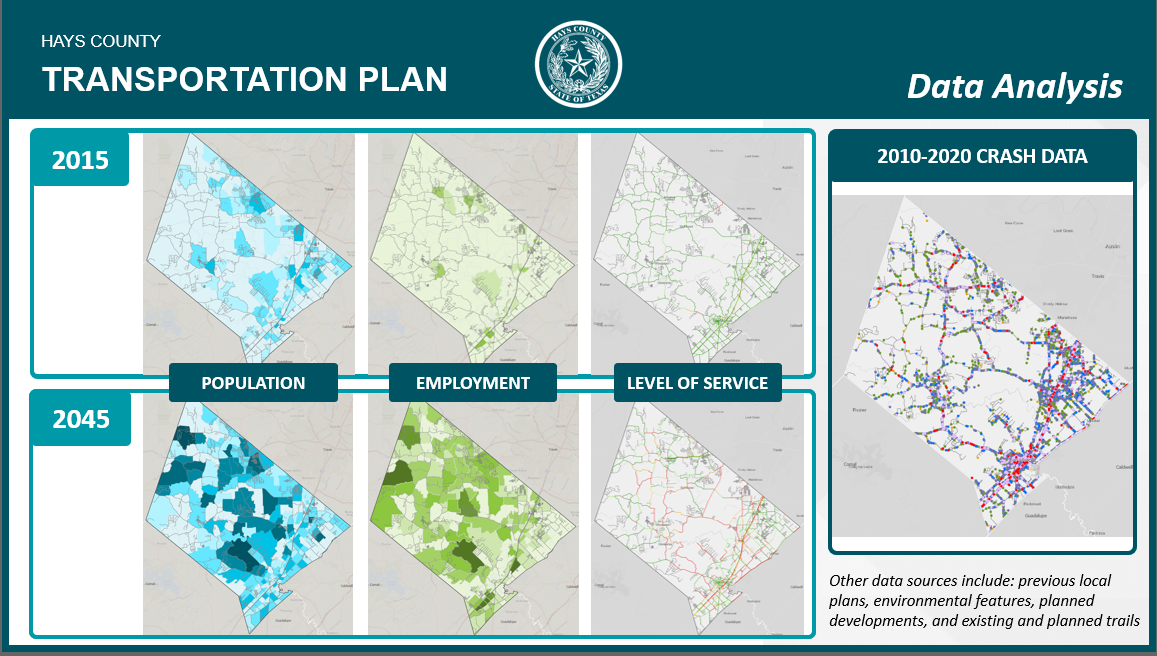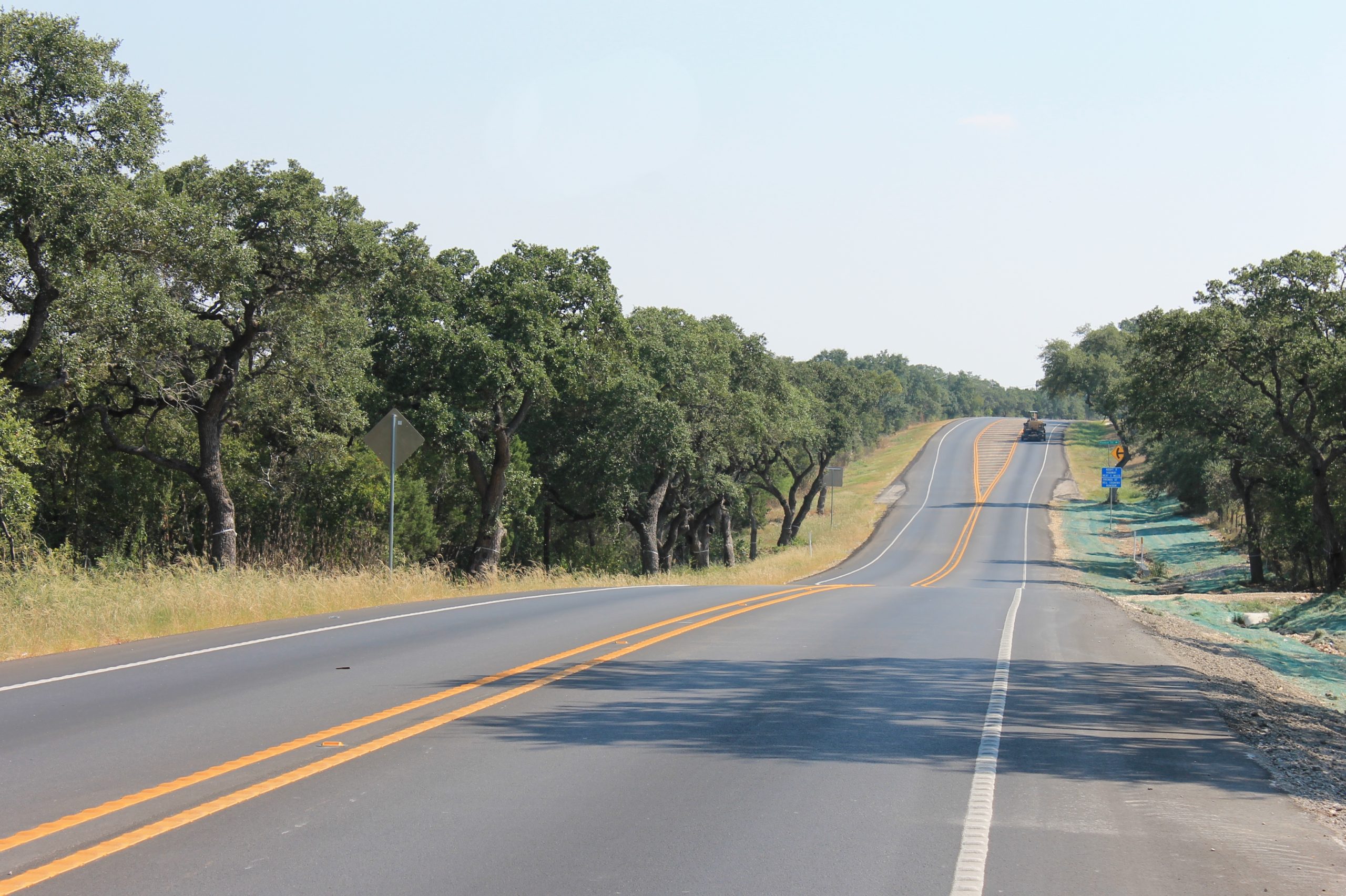Hays County Transportation Plan
Preserving the Character of the County through Careful Planning
Project Purpose
According to the U.S. Census Bureau, Hays County experienced the second largest growth by percentage in the nation from 2010 to 2019, at 46.5%. Given this rapid growth and development, the County desired to update its Transportation Plan, since its last major revision occurred in 2013.
The purpose of the Hays County Transportation Plan is to identify safety improvements, improve regional connections and mobility, and plan for future growth and development. The plan will serve as a tool to help identify and implement short and long-term projects, preserve right-of-way, and collaborate with regional partners to guide our future transportation landscape.
Project Approach
The updated Hays County Transportation Plan is based on the same philosophy that guided the County’s previous plan: we are seeking to make the most of the existing transportation system, only expanding existing roads or adding new roadways as absolutely necessary. This approach allows the County to balance the transportation needs of a growing population and the desire to protect the culture and character of the County. To develop the plan, many factors were considered including: population, employment, and traffic projections; the needs of communities in the County as identified in their transportation plans; community input from the first Virtual Open House in September 2020; and transportation needs identified by discussions with stakeholders, including cities, school districts, and emergency service districts.
The Transportation Plan is essentially a roadmap that identifies what each Hays County roadway needs to “grow up to be” to effectively serve the County. While these improvements won’t happen overnight, having a countywide Transportation Plan helps ensure that individual roadway projects ultimately build an efficient roadway system that works together as a whole.
The plan includes a map and roadway table with recommended cross sections for each roadway’s ultimate condition. Before any of these improvements are implemented, the County will do more detailed, location-specific studies to determine to what degree the ultimate improvements need to be implemented in the near term and how much can wait until sometime in the future. In many cases, the County will first design and construct interim improvements to make the most of existing capacity: improving key intersections, adding turn lanes, improving low water crossings, installing traffic signals, improving drainage facilities, or realigning dangerous curves. While the focus of the Hays County Transportation Plan is building vehicular roadway capacity on a countywide scale, planning ahead for the ultimate cross-sections of the roadways will give the County greater flexibility to include bicycle and pedestrian facilities where appropriate, to be determined when planning and design occur for specific improvements. The plan also identifies the recommended right-of-way and timeframe for each improvement: short, mid, and long-term, or 10, 20, and 30 years, respectively.

As someone who has lived in Hays County since first moving to Texas almost 14 years ago, I’m thrilled to get to help the County plan for the future and preserve its unique character.
Joe Cantalupo, AICP, Project Manager
K Friese + Associates (KFA)
Project Results
Currently, we are gathering feedback from the community on draft recommendations via our second Virtual Open House. Once we hear from the community on the draft Plan, the project team will consider that feedback to revise and finalize the Plan and present it to the Commissioners Court for consideration this spring.
For more information about this planning effort, visit www.haystransportationplan.com.


